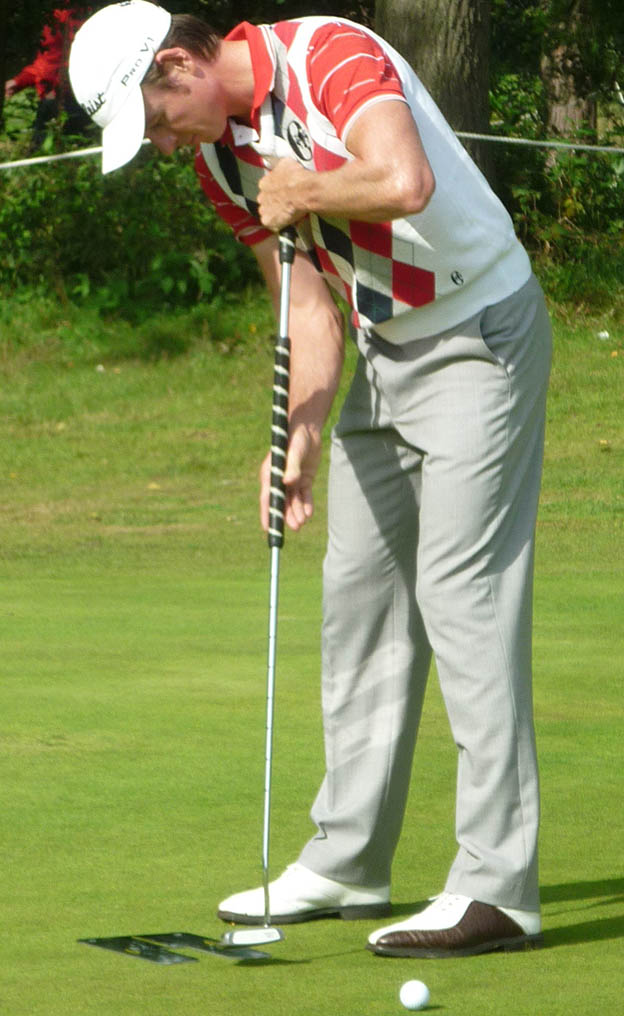It’s in the hole! But not with an anchored putter

Eyes on the ball. Australian professional golfer Brett Rumford is one of a number of players who use the anchored putter during competition. The club will be phased out of use by 2016, according to new rules.
On Tuesday, professional and amateur golfers around the world awoke to news that the elongated, eye-catching and often controversial anchored putter — or “belly putter” — will be outlawed from competition by the year 2016.
Tim Lee, a professor in the Department of Kinesiology who has researched motor control and learning in golfers, weighs in on the rule change, and what it means for the future of the game.
How long has the anchored putter been in use?
“These types of putters have been in use for more than 40 years, so they’re not a new invention. But they have become more prominent in recent years. Roughly 20 per cent of professional players use them regularly, including Keegan Bradley and Adam Scott [who won the 2013 Masters tournament last month while using the club].”
How does it work?
“The anchored putter works by resting the end of the club against a fixed point on the body, often in the player’s chest or midsection. This reduces the degrees of freedom during a swing. Theoretically, less can go wrong when compared to a traditional untethered swing, which does not involve anchoring the club to a fixed point on the body.”
Does it provide a competitive advantage on the green?
“There is very little data to suggest that anchored putters actually help golfers. It’s largely theoretical. However, several golfers on the PGA tour have spoken out against the club in recent years, including Tiger Woods.”
So why ban the club?
“Some would argue the rule change has more to do with preserving the integrity of the game, and maintaining the use of an untethered or ‘free’ swing during competition. However, if every player has the option to use it, I don’t see the harm in allowing anchored putters.”
